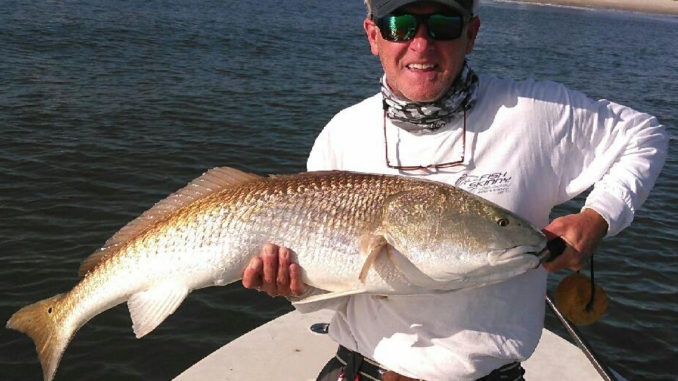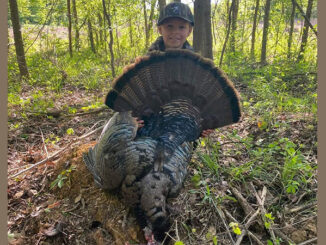
Fall fishing action fires off all over the South Carolina coast this time of year, but for big-fish action, you don’t have to go far from the beach. Big, bull redfish are heading out of inlets for the ocean, where they will spend the winter, making nearshore waters, especially those off the Grand Strand, prime areas to be brought to your knees by a strong fish.
Greg Holmes of Fish Skinny Charters of Little River, S.C., lines up daily excursions that often wind up with double-digit catches of these adult redfish when the fall run hits its peak.
“They usually start running our beaches at the end of September and will continue towards the end of October,” said Holmes (843-241-0594). “We find them from behind the breakers to as deep as 20 feet; that’s usually around half-mile or less.”
These schools of huge redfish are migrating along the coast, trailing the big pods of bait, with menhaden comprising their primary diet during this run.
The menhaden typically travel in large schools along the beach, but they will get concentrated when large predators are nearby. Baitfish naturally pack together when danger is near, but for anglers, it’s a glaring find and the go-to place to start casting.
“We look for the black balls where the bait is packed tightly together,” Holmes said.
The adult reds are very eager to eat and will take both live bait and artificials. The sure-fire method to get hooked up quickly involves a live menhaden on a Carolina-style rig. Holmes uses a 1- or 2-ounce egg sinker and a 3/0 to 5/0 offset circle hook.
“When they are in there thick, the rig will never even touch the bottom before getting snatched by one of the bulls,” he said.
While anglers can just free-line the live bait into these schools, the weight allows the angler to make longer casts to keep away from the school.
“I like to be at least two to three boat-lengths away from the school, and the weight helps make those longer casts,” he said.
In addition to live bait, Holmes will frequently use artificials, and just about anything that resembles a large menhaden, mullet or shrimp will quickly get eaten. He prefers to use 1- or 2-ounce bucktails in white or chartreuse to get their attention.
While most of these big menhaden schools will have bull reds around them, sometimes the sheer number of schools is so great that not every school of menhaden will not have a fish. But when they are present, they will usually eat fairly quickly. Holmes will drift up to a school on his trolling motor and give them 5 or 10 minutes to bite moving on to the next school.
“If they are there, it doesn’t take very long to get bit, and sometimes the rig will not even hit the bottom before a fish takes it,” he said.
Holmes recommends anglers use heavy rods, reels and terminal tackle to reduce the stress on the fish as much as possible. He uses at least 5000 series spinning reels with 40- to 60-pound braided line.
“It’s a tremendous fishery we have here off Myrtle Beach, but we try to get the fish to the boat and back in the water as fast as possible,” he said.




Be the first to comment